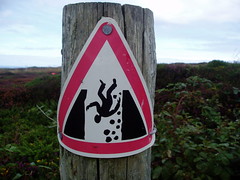 Yesterday, Rex wanted to know my opinion of Mission Control. You can see the site in a separate window here. It’s not NASA (luckily), it’s a corporate web site.
Yesterday, Rex wanted to know my opinion of Mission Control. You can see the site in a separate window here. It’s not NASA (luckily), it’s a corporate web site.
So, I went off to take a look.
Web design, graphics, and navigation OK
Not too bad, though I would prefer a “real” photo, rather than a stock image, and I think the blurry image is distracting (I keep trying to focus on something that’s impossible to see clearly, and it makes my eyes hurt). A few other nits about type color (headings could be darker, and not enough contrast on some navigation buttons), but otherwise, fairly clean design, with lots of white space.
Marketing message failure
The benefits and results they claim to get are so vague they’re useless. What does “Translating broad initiatives and objectives into those exact actions that will fulfill those initiatives and objectives” mean? It’s completely circular.
How about:
- cut product development time by 42%
- reduced employee turnover by 27%, saving $500,000 in recruitment costs
Poor customer focus
I ran it through the we-we calculator. It came up with a customer focus score of 10% (out of 100).
That means they talk about themselves nine times as much as they talk about the customer. There’s quite a bit about what they do, but very little about what I would get if I hired them. What headache do they stop ? What sort of aspirin do they have?
They seem to provide some sort of services to improve teamwork and productivity, but it’s hard to tell. Do they save me money? How? Do they reduce employee turnover?
Gobbledygook test failure
The first sentence on the home page says, ” Are the things you’re doing the most effective ‘doings’ to accomplish what’s of critical importance to the organization?”
They’ve made up words (doings?) for no reason. Why not say tasks instead?
Further along it says, “Mission control provides actionable access to determining and doing the most effective ‘doings’ that impact and elevate organizational performance.”
Seems they’ve fallen straight down the gobbledygook rabbit hole.
They’re not really telling me what they do. What’s actionable access anyway?
Then it says they create “Precision instruments..acting in alignment to produce their part of the mission critical results” Sounds more like machines in a factory than people.
The grammar is poor, and the writing is clunky, “An executive is left asking themself.”
And, the press releases haven’t been updated since 2003.
What the???
I noticed a copyright notice on their site. It says that their copyrighted terms include “Agenda”, “Now”, and “Transparent.” Huh?
If I wasn’t looking at the site for this post, I would have run away screaming after a few seconds.
If they were my client, I would recommend that they tweak the design slightly, and completely rewrite the text to make it clearer what their services are, focus more on the customer, and emphasize real benefits. No HR person alive wakes up in the morning and says, “I want my staff to be precision instruments acting in alignment.” They might think, “I wish my staff cooperated more.” That’s a real concern, which a company such as Mission Control might be able to solve.
What do you think? And, Rex, why and how did you pick this company in the first place?





